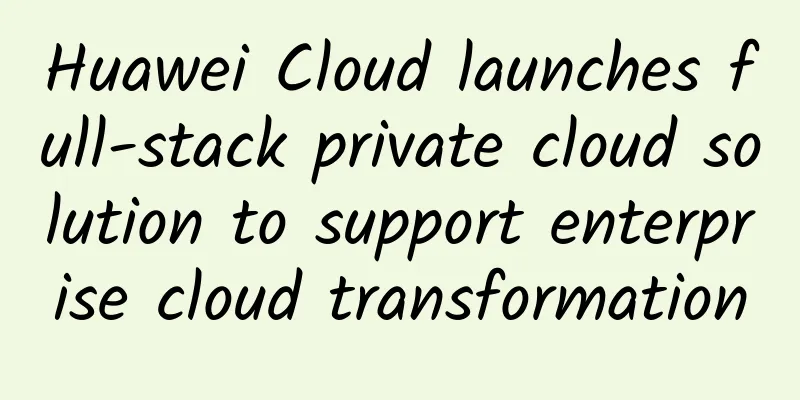In the era of cloud computing, there are three network factors that enterprises cannot ignore!

|
In the era of distributed interconnected cloud hosting application economy, the network plays a vital role. If enterprises want to host their workloads with a cloud service provider (CSP), they must make an informed decision about how to connect to the cloud infrastructure. When choosing a cloud service provider, enterprises sometimes overlook the importance of evaluating network options. Network connectivity alone is not enough, and enterprises also need to consider network speed, flexibility, network latency, number of hops, network redundancy, reliability, telecom provider options, and other network configurations. In addition, companies should evaluate the following factors: Where are users located? How do users connect to business applications? And how can users be authenticated using a centrally managed direct structure? Some companies prefer to have all users and employees connect to the corporate network first, and then connect to cloud-hosted applications through the corporate intranet. There are three network factors you need to consider: 1. Connect your corporate network to cloud providers Today, enterprises connect to the cloud primarily through two network options: virtual private networks (VPNs) and dedicated lines with fixed bandwidth. A VPN is an encrypted channel for data exchange over the Internet. VPNs are very easy to set up. Customers use VPNs 85-90% of the time. However, this connection is limited by the provider's network bandwidth and shares traffic online. For example, a retailer may need to ensure that all stores in different locations can connect to an application to access corporate applications hosted at a CSP. In this case, VPN is their best choice. Large telecom service providers only need to set up routers in CSP data centers or their points of presence (POPs) to provide dedicated lines with fixed bandwidth. They can provide customers with a separate encrypted channel through which their traffic can reach the CSP. Internally, telecom locations are interconnected by high-speed fiber optic lines that are shared among customers. Dedicated lines provide higher network redundancy and reduced network latency than public networks. However, ordering and setting up these lines requires a lot of time. Therefore, customers should leverage their existing telecom service providers to interconnect with their CSP's primary disaster recovery site. Large applications such as SAP and Oracle have many users located in different geographical locations, and in many cases, such applications require a dedicated line to host their core business applications. Some hosting service providers offer customers an option: customers can connect to a POP and then connect all their data centers internally through their high-speed fiber. 2. Use firewalls and load balancers A firewall is like an automatic door to a house; you only let in people you know. A firewall isolates internal traffic from external traffic. And a CSP can provide multiple firewalls to isolate data flows based on traffic type. Load balancers redirect global and local traffic to the correct hosts in the network. Load balancers are an inherent feature of the cloud and are provided to customers as Load Balancing as a Service (LbaaS). 3. Expand corporate IP and domain names to CSP It’s like extending your corporate network to another data center. You can even replicate your Active Directory to your CSP for faster, centralized user authentication. If you can use your own domain name and IP to set up infrastructure virtual machines and verify user identity on the CSP website, then migrating business applications to the cloud will undoubtedly become easier. Networking is a complex science. I've heard IT managers call it "black tech." But cloud monetization and automation tools in the enablement phase have significantly reduced the complexity and shortened the time it takes to get started with many networking options. |
<<: Design and analysis of weak current intelligent system in intelligent building
>>: Huawei Cloud meets in a blessed place, connecting the present and future of Fujian
Recommend
What functions and advantages does 5G technology bring to enterprises?
As carriers pilot fifth-generation cellular netwo...
80VPS: AMD Ryzen+NVMe products and new platforms are 50% off, and annual payment starts from 349 yuan in Los Angeles Cera data center
80VPS is a long-established Chinese hosting compa...
To accelerate the pace of digital transformation, the Ministry of Industry and Information Technology will issue three major policies
The epidemic has given rise to many new formats a...
spinservers National Day promotion: 1Gbps unlimited traffic server from $99/month, 10Gbps unlimited traffic server from $599/month
spinservers is offering promotions for the Chines...
Cloud computing has dominated network infrastructure for many years, and it’s time for the 5G era to usher in the next chapter!
[[262785]] Technavio predicts that the applicatio...
The ultimate solution to the problem that Github cannot display images
[[379338]] Preface Not long ago, I encountered th...
Without 5G performance guarantees, can operators fully exploit this opportunity?
Private 5G networks are attractive to the largest...
LOCVPS launches 1Gbps port VPS in Hong Kong, 20% discount, monthly payment starts from 36 yuan
LOCVPS launched a 1Gbps port Hong Kong VPS host b...
CNNIC releases the 49th "Statistical Report on Internet Development in China"
The China Internet Network Information Center (CN...
Smart Manufacturing: Ensuring a Smart Future for Manufacturing
Smart manufacturing has the potential to improve ...
5G applications are gaining attention, adding new impetus to smart education!
Education is a national priority. my country has ...
Two ways 5G will change cloud computing
5G is coming, and most people are looking for the...
Li Xue: Today's goal is to grow together with the company
[51CTO.com original article] As enterprises have ...
Virtono has a limited time 50% discount, Dallas/Romania KVM annual payment starts from 7.47 euros
Virtono has released a limited-time 50% discount ...
Shaanxi Kunpeng Ecological Innovation Center actively explores talent training, and two Kunpeng training activities have been successfully concluded
[51CTO.com original article] On November 28, 2020...









